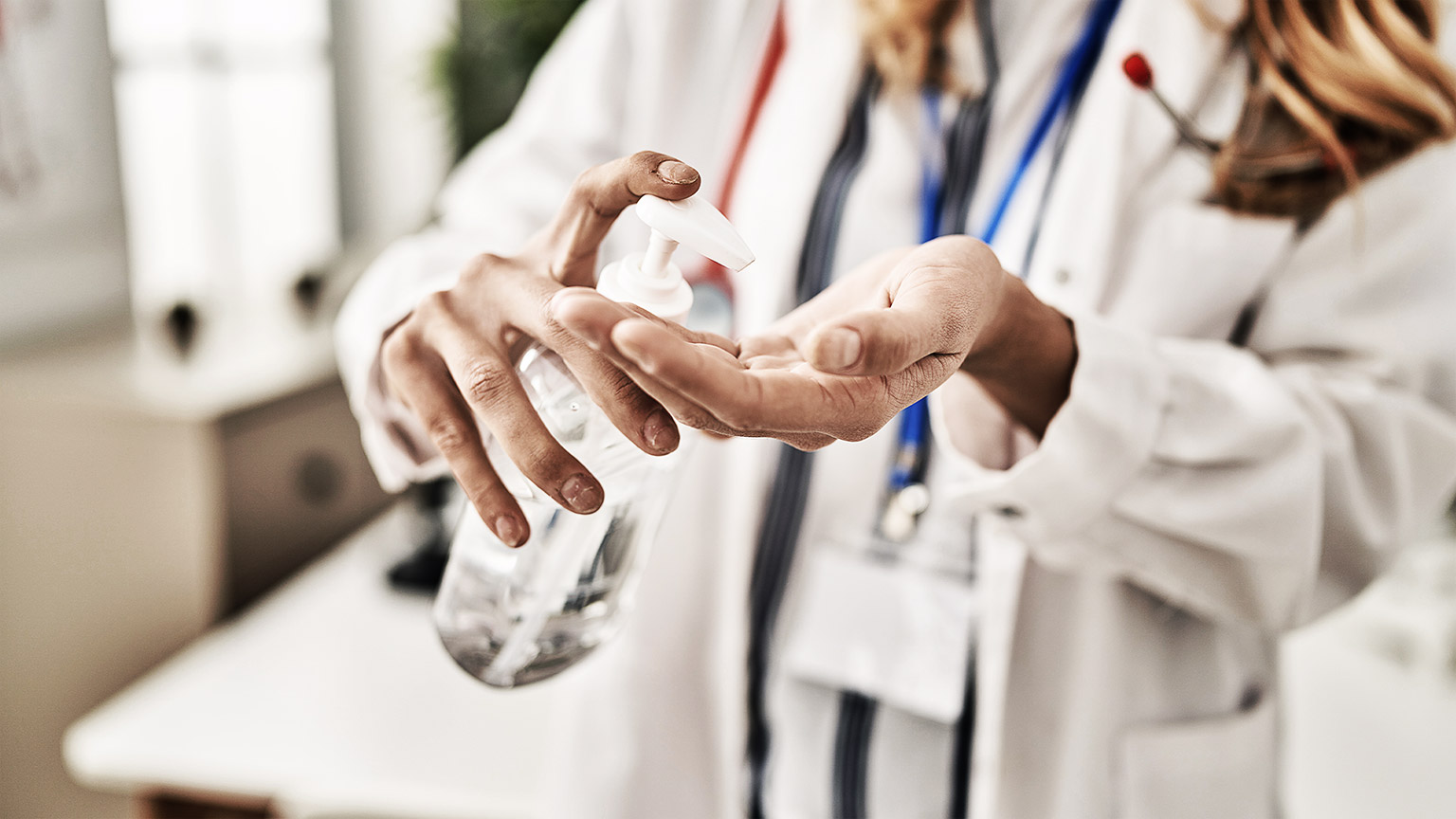In this section you will learn to:
- Identify and access basic principles and practices of infection prevention and control in the work setting.
- Use knowledge of current infection prevention and control information to explain requirements including roles and responsibilities to the work group.
- Demonstrate current infection prevention and control techniques in the work setting.
- Provide timely information and feedback to the work group and relevant stakeholders about potential and identified risks and the outcomes of infection risk assessments and audits.
- Provide opportunities for the work group to seek further information on workplace infection prevention and control principles, standards, priorities and techniques.
- Adapt communication to address the requirements of individual workers and work settings
- Communicate with nominated infection prevention and control person, network or authority in relation to applicable infection prevention and control standards, policies and procedures.
Supplementary materials relevant to this section:
- Reading A: The Infection Prevention and Control Team
- Reading B: Communication for Patient Safety
Health care workers (HCWs) are exposed to a wide variety of potentially infectious micro‐organisms in their clinical working environment. The transmission of infectious agents from person to person or from inanimate objects within the clinical environment that results in infection is known as cross-infection. The protocols and procedures involved in the prevention and control of infection in healthcare facilities are directed to reduce the possibility or risk of cross-infection occurring in the workplace, thereby producing a safe environment for both patients and staff. Thus, management of the risks associated with cross-infection is important in our healthcare systems. Infection control measures are directed towards reducing, to an acceptable level, the probability or possibility that an infection could be transmitted.
Take note that throughout this module, we will be using the term ‘patients’ to refer to service users; however, keep in mind that it can be used interchangeably with other terms such as ‘clients’ and ‘consumers’. The same is applicable when referring to the employees at a healthcare facility; you will come across the term ‘health care worker which is a broad term that includes practice managers, nurses, doctors, and caregivers.
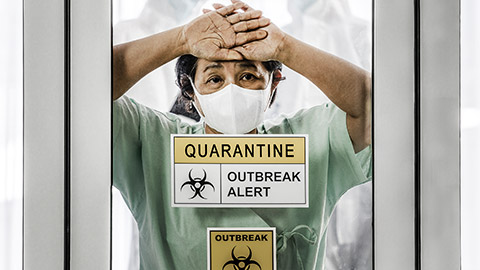
Causes of Infection
When you are working in a medical environment or around vulnerable patients or clients, it is important to understand the foundations of an infection. Let’s start with the microbes which are universal and may live inside and outside of our bodies and in the surrounding environment such as in water, food, vegetables, and animals. Microbes not only contribute to the maintenance of a healthy host but are also essential for our survival. They also act as a protective barrier in resisting the establishment of organisms that cause disease. A classic example of this is when an antibiotic is prescribed to us when we are sick, as it kills and disturbs harmful organisms. Let’s take a look at the main microbes that cause infections.
Fungi
These organisms have a complex cell structure, like those of humans and animals. Usually, fungi exist either in the form of moulds or yeasts which are oval or spherical and grow by budding. For example, the fungi group “candidiasis’ is a common skin disease caused by poor health or the overuse of antibiotics, leading fungi to multiply and cause infections such as thrush.
Bacteria and viruses
Bacteria are simple and largely self-sufficient unicellular organisms. Different bacteria have different growth characteristics. Strictly aerobic bacteria need oxygen to grow; strictly anaerobic bacteria cannot grow in the presence of oxygen, while facultative anaerobic bacteria can grow in the presence or absence of oxygen. Some bacterial spores are extremely refined and can survive most forms of disinfection, this means they will continue to grow regardless of the environment they are in, thus causing an infection.
Viruses, on the other hand, are incapable of independent survival and require host cells for growth and reproduction. They are a much smaller size and provide a relatively high degree of immunity following infection and may require antiviral agents to treat infections as the antibiotics used to treat bacterial infections are not effective. They cause infection by invading the cell and taking control of their cellular mechanisms to reproduce. They then attach themselves and inject their genes into the cell.
Parasites
Parasites are organisms that live off other organisms, or hosts, to survive. Some parasites don’t noticeably affect their hosts. Others grow, reproduce, or invade organ systems that make their hosts sick, resulting in a parasitic infection.
Parasitic infections can be caused by three types of organisms:
- protozoa - single-celled organisms that can live and multiply inside the body.
- helminths – are multi-celled organisms that can live in or outside of the body. They are most commonly known as worms (e.g., flatworms, tapeworms, thorny-headed worms, and round words).
- ectoparasites - multicellular organisms that live on or feed off your skin. They include some insects and arachnids, such as mosquitos, fleas, ticks, and mites.
Now that you have an idea of the classification of microorganisms, let’s take a look at the process of infection.
Process of infection
| Colonisation | Infection | Disease |
|---|---|---|
| This takes places when the microbes are present without any host interaction. No harm has taken place at this point. | Now that the microorganism has entered the host, the two starts interacting, leading up to an infectour disease or an illness. | The host has new been infected and displays a decline in their wellness due to the infection. The disease woud usually be a medical condition which winvolves a pathological process. |
Did you know?
There are three (3) types of diseases that can affect a host:
- Localised diseases which affect specific parts of the body
- Disseminated diseases which spread to other parts of the body
- Systemic diseases which affect the entire body
Can you think of any exemplar diseases that might fall under these categories?
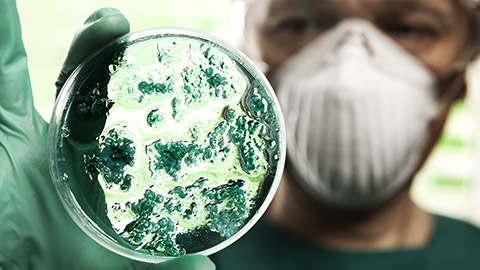
Now that you have understood infections are caused, let’s take a look at how these infections are transmitted to the host. The establishment of an infection in the body is depended on the three main factors:
Number of Microbes
Each microorganism has a set infective dose. Microorganisms which have low infective doses spread more faster than those microorganisms which have high infective doses. In addition, if the person is immunosuppressed (meaning they have low immunity or have a disease causing them to be susceptible to illness) the infective dose required to cause infection is even lower.
Immune status of patients
As HCWs, we need to identify the immune status of the patients entering a healthcare facility. This is also one of the most important factors as patients who are elderly or immunosuppressed are more susceptible to infection. In addition, patients who are immunised or who have been exposed to certain infectious disease (e.g., chickenpox) are less likely to get the same disease. It is important to note that exposure to a microorganism does not always necessarily lead to infection and the figure below summarises the possible outcomes:
Due to underlying illness, immunosuppressive therapy, and invasive procedures, hospitalised patients are more prone to develop infections. They can acquire infection either from an external route, where the source microorganisms are acquired from health care environment, equipment and from health care workers; or, via an internal route where the source of microorganisms is from the patient’s own microflora. External infections are commonly seen in immunocompromised patients.
Infectious agent
Infectious agents (pathogens) include not only bacteria but also viruses, fungi, and parasites. The virulence of these pathogens depends on their number, their potency, their ability to enter and survive in the body, and the susceptibility of the host. Let’s take for example, the smallpox virus is particularly virulent, infecting almost all people exposed. In contrast, the tuberculosis bacillus infects only a small number of people, usually people with weakened immune function, or those who are undernourished and living in crowded conditions.
Reservoir of infection
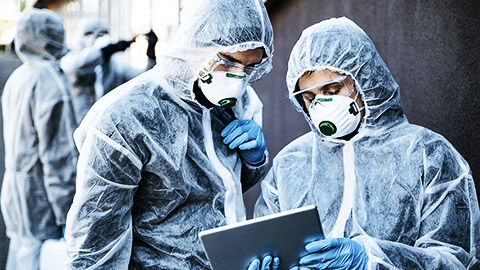
In this section will explore where the infectious microbes live – this can be inside or outside the hosts. We will also briefly look at the many ways they move from one host to another. Remember as a HCW, understanding how infectious microorganisms spread is critical to preventing infectious diseases. It is important to know that a microbe does not necessarily need a living host to survive; some might be able to persist in a dormant state outside of a living host.
Likewise, a reservoir of infection could be an infected person, animal, items/equipment, and/or the environment on which microorganisms can survive and, in some cases, multiply. Animals and human beings can all serve as reservoirs, providing the essential requirements for a microorganism to survive at specific stages in its life cycle. Think of these reservoirs at the home nurturing these infections and then slowly letting them escape onto a host.
Animal reservoirs
Humans are also subject to diseases that have animal reservoirs. Many of these diseases are transmitted from animal to animal, with humans as incidental hosts. Long recognised zoonotic diseases include anthrax (sheep), plague (rodents) and monkeypox (prairie dogs). Many newly recognised infectious diseases in humans, including HIV/AIDS or Ebola infection are thought to have emerged from animal hosts, although those hosts have not yet been identified.
Environmental reservoirs
These are usually plants, soil and water. Many fungal agents live and multiply in the soil. Outbreaks of lung diseases are often traced to water supplies in cooling towers and evaporative condensers, which act as the reservoirs for the microbe causing these infections.
Other vectors
Infectious reservoirs are always in health care settings, and may include everything from patients, visitors, and staff members to furniture, medical equipment, food, water, and blood. A human reservoir may be either an infected case or a carrier.
Carriers fall into four categories:
| Incubator Carrier | Convalescent Carrier | Intermittent Carrier | Chronic Carrier |
|---|---|---|---|
| An incubatory carrier is one who has an infection but does not yet show symptoms, e.g. a person with an asymptomatic COVID-19 infection. | A convalescent carrier is in the recovery stage of an illness but continues to shed the pathogenic microorganism for an indefinite period, e.g., a patient who has had a Salmonella infection commonly sheds the organism in their faeces even after symptoms disappear. | An intermittent carrier occasionally sheds the pathogenic microorganism from time to time. For example, some people are intermittent carriers of Staph. aureus. | A chronic carrier always has the infectious organism in their system, e.g., chronic carriers of hepatitis B and C virus. Asymptomatic carriers may present a risk of cross infection in health care facilities because their illnesses go unrecognised and therefore adherence to standard infection control prevention is essential at all timeBs. |
Blood and body fluids
This type of infection may occur when someone’s blood gets into another person’s system. This can happen when sharps are not handled with care, or gloves not used for procedures where there is a risk of exposure to blood (e.g., cuts).
Waste
This is when an infection hangs onto a host when the microorganisms leave the body of the infected person by means of body secretions (e.g., stool and vomit).
Portal of exit
This is usually the exit pathway where an infectious agent leaves its reservoir. Usually, this portal is the site where the microorganism also grows. Common portals of exit associated with human reservoirs include the respiratory, genitourinary, and gastrointestinal tracts, the skin, and mucous membranes.
Mode of transmission
As HCWs you will be openly exposed to many sicknesses, however knowing the precautionary measures and the transmission routes of this microbes will make you understand how to keep safe.
- Contact transmission – this is known to be the most frequent mode of transmission of health care associated infections (HCAIs). It occurs when microorganisms are transferred from one infected person to another person. This can occur either as:
- Direct contact - when there is physical contact with a patient, e.g., during activities such as bathing, dressing changes, insertion of needles and maintenance of invasive devices such as a respirator or catheter. There are two ways of direct contact transmission:
- Droplet transmission - this occurs when microorganisms come into contact with the mucous membranes of a person’s nose, mouth, eyes, etc. such as when an infected person coughs, sneezes, or talks. Droplet transmission differs from airborne transmission in that the droplets are heavy and therefore do not remain suspended in the air for a long time and settle on surfaces very quickly. In order to prevent transmission via this route, it is recommended to wear a surgical mask when within 1.8–3 metres of the patient or upon entry into the patient’s room. In addition, it is essential that overcrowding of patients is avoided and adequate spacing between patients is kept.
- Airborne transmission – this occurs when pathogens are transmitted to a susceptible person though inhalation of small droplet nuclei of particle size. Therefore, health care workers (HCWs) should wear a respirator when close to potentially infectious patients. Ideally, these patients should be in an isolation room with negative pressure ventilation to dilute and remove the infective microorganisms safely.
- Direct contact - when there is physical contact with a patient, e.g., during activities such as bathing, dressing changes, insertion of needles and maintenance of invasive devices such as a respirator or catheter. There are two ways of direct contact transmission:
- Indirect transmission - indirect contact transmission occurs when an infectious agent is transmitted through a contaminated intermediate object (items and equipment’s) or person. Use of personal protective equipment is used as an additional barrier to prevent contamination of clothing, e.g., uniforms when with infected/colonised individuals. Hands are contaminated not only after touching infected/colonised patients but also by touching contaminated items/equipment and environment; therefore, hand hygiene is key in preventing this mode of transmission.
Self Reflection
Think about the days of the pandemic COVID-19 - what kind of transmission was this sickness? What were the precautions you may recall that we all had to follow?
Portal of entry
This is the path by which an infectious agent invades a susceptible host; after all, the microbes need to find the way into another person so it can keep growing and passing on the infection. This can be brought through the eyes and mouth, hands, open wounds and any tubes put into the body such as a catheter or feeding tube.
Susceptible host
The final and most important link in the chain of infection is the susceptible host. The human body has many defence mechanisms for resisting the entry and multiplication of pathogens. When these mechanisms function normally, infection does not occur. However, in immunocompromised patients where the body defences are weakened, infectious agents are more likely to invade the body and cause an infection.
In addition, young infants and the elderly are at higher risk for infection because in the very young, the immune system does not fully develop until about 6 months of age, while old age is associated with declining immune system function as well as with chronic diseases which also weaken host defences.
Factors that increase susceptibility
The host’s vulnerability to any infection is usually affected by factors such as nutritional status, intercurrent disease, pregnancy, immunosuppressive drugs and malignancy. Previously mild or clinically inapparent infections can produce dangerous disease when the host’s immunity falls.
Types of infectious risks
An infection is classified as HCAI if it was not present or incubating at the time the patient was admitted to the health care facility. Infections should be considered as HCAIs if they are related to procedures, treatments, or other events. As a health care worker, you might notice most HCAIs are identified before the patient is discharged, although some are incubating at discharge and do not become apparent until later.
The four most common HCAIs are:
- Urinary tract infections which are mostly associated with the use of urinary catheters
- Lower respiratory tract infections which are mainly associated with ventilated patients in the ICU
- Surgical site infections
- Bloodstream infections mainly associated with the use of intravascular devices.
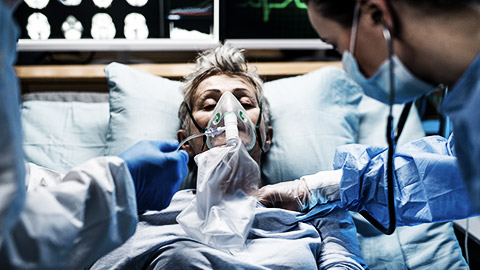
Now that you have been introduced to the transmission of infectious agents through the chain of infection, let’s look at how healthcare facilities, its health care workers and patients can play a role in keeping infections at bay. These requirements are common across the majority of health care facilities. Healthcare workers and other persons at the health facility also have duties under the WHS Act (2018), such as the duty to take reasonable care for their own health and safety at the workplace.
Control measures for common hazards and risks
Before looking at the national and statutory guidelines, we will look at the most common hazards and risks health care workers might face in a facility and how these can be controlled. It is wise to note that these are the basic and most common hazards; risk management issues will be dealt with later in this module.
Biological and chemical hazards (i.e., Sodium Nitrate, aerosolised medications, anaesthetic gases)
Control measures:
- ensuring workers have access to hygiene facilities and products, such as handwashing and eye washing stations.
- storing chemicals safely and securely and keep a chemical register with the relevant safety data sheets (SDS).
- providing appropriate and correctly labelled waste receptacles for biological waste, chemicals and sharps.
- training workers about storing, handling and disposing of biological hazards, chemicals and sharps safely.
- providing PPE, such as gloves, face masks, eye protection and protective clothing.
Find out more…
The Australian Work Health and Safety Code of Practice (2018) has been developed to provide practical guidance for people who have duties to manage risks to health and safety under the Work Health and Safety Act and regulations apply in jurisdiction. The legislation is comprehensive therefore it is mandatory that you have a read through the following documents and website:
Model Code of Practice: How to manage work health and safety risks (safeworkaustralia.gov.au)
Model Code of Practice: Hazardous manual tasks (safeworkaustralia.gov.au)

Let’s take a look at the National guidelines for infection prevention and control across Australia. Successful infection prevention and control involves implementing work practices that reduce the risk of the transmission of infectious agents through a two-tiered approach, including:
- Routinely applying basic infection prevention and control strategies to minimise risk to both patients and healthcare workers, such as hand hygiene, appropriate use of personal protective equipment, cleaning and safe handling and disposal of sharps
- Effectively managing infectious agents where standard precautions may not be sufficient on their own. These specific interventions control infection by interrupting the mode of transmission (transmission-based precautions; formerly referred to as additional precautions).
The following extract provides you with the common protocols that are followed across the country to prevent and control infection.
Standard precautions are used by healthcare workers to prevent or reduce the likelihood of transmission of infectious agents from one person or place to another, and to render and maintain objects and areas as free as possible from infectious agents.
- Personal hygiene practices, particularly hand hygiene, aim to reduce the risk of contact transmission of infectious agents (see Section 3.1.1).
- Appropriate use of personal protective equipment, which may include gloves, gowns, plastic aprons, masks/face-shields and eye protection, aims to prevent exposure of the healthcare worker and patients to infectious agents (see Section 3.3).
- Safe handling and disposal of sharps assists in preventing transmission of blood‑borne diseases to healthcare workers (see Section3.1.2).
- Environmental controls, including cleaning and spills management, assist in preventing transmission of infectious agents from the environment to patients (see Sections 3.1.3 and 4.6.1).
- Appropriate reprocessing of reusable equipment and instruments, including appropriate use of disinfectants, aims to prevent patient-to-patient transmission of infectious agents (see Section 3.1.4).
- Practicing respiratory hygiene and cough etiquette reduces risk of transmission of infection (see Section 3.1.5).
- Aseptic technique aims to prevent microorganisms on hands, surfaces or equipment from being introduced into a susceptible site (see Section 3.1.6).
- Appropriate handling of waste and linen assists in reducing transmission of infectious agents (see Sections 3.1.7 and 3.1.8).
(Australian Government, 2019)
Statutory and Territory requirements
The National guidelines are adhered to across Australia, however as a health care worker (HCW) you would be required to follow not only theses national guidelines, and the policies and procedures of the clinic you work for, but also follow and address the legal statutory and territory requirements when it comes to infection prevention and control.
Remember each clinic depending on which state or territory it is located in needs to follow the recommended legislations and also make sure the staff members have access to these documents at all times. You may also train your staff to adhere to the legislation requirements for a smooth running of the clinic and providing the best care for its patients. Remember to assist your new HCWs in becoming familiar with these documents as it can be quite overwhelming to a HCW moving from other states or even from overseas, they might not always understand these legislations and how to abide by it.
The following table briefly outlines the key legislations followed under each state and territory for infection prevention and control. The details are exhaustive so do make sure you have a read through each guideline.
| State or Territory of Australia | Legislation guidelines to follow |
|---|---|
| Queensland | |
| New South Wales | https://www1.health.nsw.gov.au/pds/ActivePDSDocuments/PD2017_013.pdf |
| South Australia | Infection prevention and control and personal protective equipment (PPE) advice | SA Health |
| Western Australia | https://ww2.health.wa.gov.au/Articles/A_E/Communicable-disease-control-guidelines |
| Tasmania |
https://www.health.tas.gov.au/health-topics/infection-prevention-and-control |
| Victoria |
https://www.health.vic.gov.au/infectious-diseases/infection-control-guidelines |
| Northern Territory | https://health.nt.gov.au/professionals/centre-for-disease-control/resources-and-publications |
| Australian Capital Territory | https://www.health.act.gov.au/sites/default/files/2018-09/Infection_Control_for_office_practices_and_other_community_based_services_Code_of_Practice_2005.pdf |
Find out more.
The Australian Guidelines for the Prevention and Control of Infection in Healthcare is comprehensive and will be helpful - take a moment to read through - Australian Guidelines for the Prevention and Control of Infection in Healthcare (2019)||Infection prevention and control in the healthcare setting (magicapp.org)

Now that you have a good understanding of all the legislation side to infection prevention and control, we need to now identify how to use specific items within the healthcare facility appropriately. As a HCW, you will come across many objects, equipment, medications and substances that would need to be used with caution. In this section we will dwell into the appropriate use of sharps such as needles and how care should be taken with re-usable equipment. The use of sharp devices exposes healthcare workers to the risk of injury and potential exposure to blood borne infectious agents.
Safe sharps management
The safe handling, use and disposal of sharps is necessary to prevent injury and the possible transmission of disease. It is important that staff with the responsibility for infection prevention and control in the practice assume an active role in sharps management.
Sharps are defined as anything that can penetrate the skin. Healthcare workers face the risk of injury from needles and other sharps during many routine procedures. The safe handling, use and disposal of sharps is necessary to prevent injury and the possible transmission of disease to patients, doctors, other health professionals, practice staff and cleaning contractors. Sharps may be contaminated by biological substances (e.g., blood, microorganisms) and other hazardous substances (e.g., medications, chemicals). All sharps, unless known to be sterile, should be considered contaminated.
| Do’s with sharps | Don’ts with sharps |
|---|---|
| Do think about safe disposal before generation of sharps. Sharps are best disposed of at the point of use. Strategically placed sharps containers need to be immediately available in all areas where sharps are generated. | Don’t remove or bend used needles. Most sharps injuries occur when attempting to manipulate a used needle. |
| Do dispose of sharps correctly. Ensure that sharps are immediately placed into a sharps container after use or placed into a kidney dish if not disposed of immediately. | Don’t overfill sharps containers. The practice of compacting sharps by shaking the container or forcing more sharps into an already full container can lead to a sharps injury. |
| Ensure that the opening of the sharps container is clearly able to be seen by the health professional when disposing of sharps to avoid accidental injury from protruding sharps | Don’t hold ‘hands free’ scalpel removal devices by hand. Mount according to the manufacturer’s instructions securely on a wall. |
Dropped sharps
Accidents do happen; however, when trying to pick up these sharps you need to be extremely cautious by undertaking the following:
- Utilising standard precautions such as wearing gloves when picking up the sharps
- use tongs, artery forceps or a brush and pan (do not handle sharps using your hands)
- immediately discard sharps into a sharps container box only.
Disposal of sharps
- It is the personal responsibility of the individual using a sharp to dispose of it safely as soon as possible after use.
- Used needles and syringes must not be disposed in domestic waste. Health care staff who treat patients at home should place any sharps and syringes that they generate in appropriate containers for disposal through their employer’s clinical waste disposal system or via collection as appropriate.
- Needles and syringes should be discarded as a single unit into a designated sharps box. Glass slides, glass drug ampoules, razors, disposable scissors, and IV cannula must be discarded into a sharps box.
- When syringes containing arterial blood are to be sent to the laboratory, needles should be removed, and the nozzles of the syringes sealed by means of a lure rubber cap or a blunt hub on the syringe nozzle.
- If a sharp has been accidentally dropped, it must be recovered and disposed of properly. If the search is unsuccessful, the individual should ensure that other people using the area are informed so that they can take care. It is particularly important to notify cleaning staff of the possible danger. The person in charge of the area should be notified and a record kept until the sharp has been found and disposed of properly.
Sterilisation of reusable equipment and instruments needs to be carried out in a separate reprocessing area, and in a way that minimises recontamination. A suggested layout is provided below.
![[ADD IMAGE'S ALT TEXT]](/sites/default/files/Traffic%20Flow%20Diagram.png)
Processing reusable equipment
The practice infection prevention and control coordinator needs to ensure the level of processing for specific reusable medical devices and equipment is appropriate to the risk of infection posed by their reuse.
The table below is a general criterion for reprocessing and storage of equipment and instruments in healthcare settings.
| Level of Risk | Process | Examples | Storage |
|---|---|---|---|
|
Critical Entry or penetration into sterile tissue, cavity or blood stream |
|
|
|
|
Semi-critical Contact with intact mucous membranes or non-intact skin |
|
|
|
|
Non-Critical Contact with intact skin |
|
|
|
Next watch the video explaining how important instructions are.
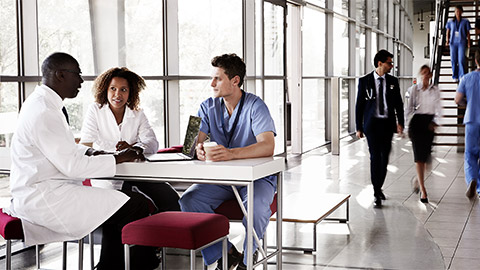
Protection of health care workers (HCWs) should be an integral part of the health and safety programme of all health care facilities. Health care facilities have a legal obligation to ensure that all their employees are appropriately trained and proficient in the procedures necessary for working safely. Let’s take a look at the different roles of individuals employed at a clinic.
Responsibilities of health care workers
HCWs are the front line of any infectious outbreak and as such are exposed to hazards that put them at risk of infection. All HCWs would need to comply with the following guidelines:
- Ensuring the safe use and handling of good and substances
- Follow workplace guidelines for infection prevention and control.
- Report notifiable incidents to Workplace Health and Safety within the State or Territory they are employed in.
- Managers would need to investigate incidents and take action to avoid having something similar happen again.
- HCWs should not come into work if they are feeling unwell.
- HCWs are always required to wear personal protective equipment if your employer provides it and you have been trained.
- Do not wilfully place your other colleagues at risk or injure yourself.
Find out more.
To further understand your obligations and safety requirements as an employee, you can read through the following guidelines to become familiar with the Work Health and Safety codes of practice - https://www.worksafe.qld.gov.au/laws-and-compliance/codes-of-practice
Education and training

All HCWs must be given adequate education and practical training on all issues relating to IPC as part of their induction/orientation programme. In saying that it is the employee’s responsibility to make sure their continuous professional developments are up-to-date and if there are any training, they require they can request it from their manager or in some instance be compensated for using an external provider at their own cost.
Staff must have the competency or ability to undertake tasks or clinical interventions, and part of this ability means possessing the necessary knowledge and skills. There are several areas of clinical practice in relation to infection prevention and control where clinical staff are formally required to demonstrate competency. For example:
- Peripheral cannula insertion
- Urinary catheter insertion
- Blood culture collection
Other areas of clinical practice where competency is required but may not be formally assessed are:
- Surgical hand antisepsis (surgical scrubbing)
- Hand washing and application of alcohol hand rub
- Insertion and management of bowel management systems (used for patients with fecal incontinence or intractable diarrhoea)
- Specimen collection (may result in an inappropriately sized specimen being obtained, or contamination of the specimen)
- Endoscope decontamination.
(Weston, 2013)
Reading
Reading A: The Infection Prevention and Control Team
As a healthcare worker being aware of your sources of support within the wards is important. Reading A looks at important information when it comes to supporting the patients and providing them with the greatest of care.

Now that you have a brief idea on the roles and responsibilities of workers within a healthcare facility, let’s look at effective communication without which none of everything we identified would be adhered to. Effective clinical communication is two-way (or multi-way if between teams), structured and continuous communication that results in timely, accurate and appropriate transfer of information. It is tailored, open, honest, and respectful, and there is the opportunity for clarification and feedback.
Key communication skills include:
- active listening
- understanding non-verbal signals (e.g., facial expressions)
- maintaining eye contact
- being assertive without being confrontational
- being mindful of people's individual space
- using positive body language
- understanding different cultures and backgrounds
- dealing with different points of view
- possessing skills and knowledge relating to the topic of your communications.
Personal awareness skills
Personal awareness skills that help with communication include:
- understanding the benefits of a positive attitude
- being aware of how others perceive you
- projecting self-confidence
- presenting well (e.g., dressing appropriately for different occasions).
It also helps to consider the circumstances surrounding your communications, such as the environmental, situational and cultural context.
For example:
- Are you in a noisy environment?
- Are you outside in the heat?
- Is the other person unhappy and displaying signs of dissatisfaction or anger?
- Is the other person from a different culture where eye contact can be considered disrespectful?
ISBAR is an acronym for facilitating health professional communication ensuring clarity and completeness of information in verbal communication. By using a structured approach one can avoid missing vital information. By consistently using the ISBAR format for handover the team can anticipate what is coming next and be aware when important information is being presented:
- Identify: Who are you and what is your role? Patient identifiers (at least three).
- Situation: What is going on with the patient?
- Background: What is the clinical background/context?
- Assessment: What do you think the problem is?
- Recommendation: What would you recommend?
- Identify risks – patient and occupational health and safety.
- Assign and accept responsibility accountability.
(Trauma Victoria, n.d.)
As a leader in your organisation, you have a responsibility to ensure that the systems and processes in your organisation support effective and structured communication at all transitions of care. It is important to consider the role and responsibilities of everyone that is involved in a transition; this includes clinicians, patients, families, carers, transport services and non-clinicians such as reception or ward staff.
Reading
Reading B: Communication for Patient Safety
Reading B provides an overview of patient safety and safety culture, and how human factor principles are applied to patient safety.
Areas to focus
There are multiple factors that support, influence and determine effective communication, collaboration and teamwork. When considering improvement strategies, the following priority areas for the health system to focus on at a national, state and territory, and local level include:
- A culture and environment that supports and fosters effective communication, collaboration and teamwork.
- Systems and structured processes that support, facilitate and integrate effective communication, collaboration and teamwork across all aspects of health care.
- Multi-modal training and assessment for healthcare providers when they enter the clinical workforce, focused specifically on developing the core competencies for effective clinical communication, collaboration and teamwork skills relevant to their clinical setting and practice.
- Monitoring, evaluation and quality improvement.
Competencies for communication skills
Remember it is not only about communicating, but as a practice manager or any HCW you would need to have the knowledge, understand the content and skills to transfer it across the health care facility. Improving your communication skills is essential for managing relationships with your staff, patients and stakeholders.
A systematic review identified the following outcomes towards gaining efficient communication skills (Denniston et al., 2017).
- Knowledge - the understanding of information through which incoming data and experiences are processed and recorded. This includes an understanding of the purpose and importance of healthcare communication, and knowledge of the different aspects of effective communication in health care.
- Content skills - this refers to the structure and framework for communication including opening and introductions, exploring concerns and shared decision-making, identifying roles and expectations with the team, and articulating information to other members of the team that is relevant to their respective roles.
- Process skills - this includes building relationships, demonstrating empathy, verbal and non-verbal behaviour, active listening skills, closed-loop communication and communication in different modes.
- Perceptual skills - an awareness of oneself and others, and how this may influence communication. For example, the impact of thoughts, feelings, bias and attitudes. This includes reflection, self-evaluation and external evaluation. This could also include situational awareness skills, and an ability to understand the information within the task environment, understand what it means, what is likely to occur and what needs to be done.
Providing access to policies and procedures

When you implement these practices to prevention and control infection you must make sure every HCW under your supervision has access to these documents, without always having to ask you. Therefore, the following methods will help you:
- Make sure there is a filing cabinet or an area easily accessible for the HCWs to access/read these policies and procedures for infection prevention and control.
- Inform your staff on where this information is stored – this can be done on their first day of employment.
- As a practice manager you will be busy therefore partner up the new HCWs with a buddy/mentor to undergo training on what the policies and procedures are and how it will work at the clinic.
- Have your staff observe how the policies and procedures are adhered to.
- Provide an acknowledgement form for your HCWs to sign off after they have read and understood the policies and procedures for infection prevention and control.
Lastly could communicate these policies and procedures with the HCWs through:
- Induction packages
- One-to-one training
- Online trainings via external providers
- An employee handbook sent via email and copies placed in all office/clinic rooms
- Have signs and notice boards reminding them of the protocols to be followed
This section of the Study Guide identified the different classifications of infection such as bacteria, viruses, fungi and parasite and the processes in which infections are passed on such as colonisation, infection and disease. You were also introduced to how these various infectious diseases. This section also looked at the types of infection risks in the work environment such as the use of chemicals and various equipment such as x-rays.
We also looked at the most key legislations, standards, procedures and guidelines in the role of keeping infections at bay.
Consequently, in the next section, we will explore into how work procedures can be adapted to reflect, identify and integrate infection prevention and control measures within a healthcare facility.
